What’s the best diet for depression and anxiety?
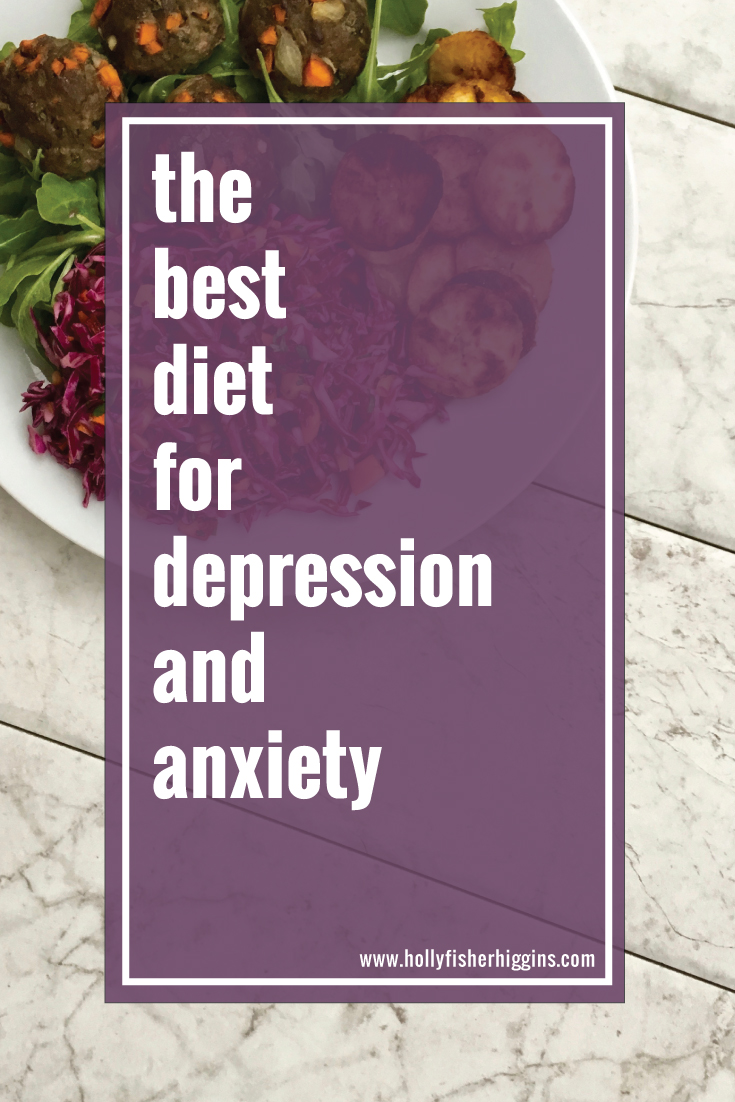
While I truly believe we all have unique nutritional needs — a concept called bioindividuality — I also believe there is an ideal dietary template to start with if you’re suffering from mood issues.
I always recommend starting with a 30-day paleo elimination program, such as Whole30. Many symptoms of depression and anxiety are caused by food sensitivities, inflammation, digestive distress, and blood sugar imbalance, and a well-balanced, paleo-style elimination program can drastically improve all of these issues.
In a nutshell, you’ll eliminate grains, dairy, sugar, legumes, highly processed cooking oils, and alcohol. You’ll focus on humanely raised animal protein, vegetables, fruits, nuts and seeds, and healthy fats. (Sounds intimidating, but it’s actually super delicious.)
After an elimination program, you can experiment with adding foods back in, one by one, to assess your tolerance. With some experimentation and due diligence, you can intuitively find the right diet for you.
Hands down, the biggest mood-crashing culprits I see in my practice are sugar, gluten, and dairy (in that order). I always advise people to be extra careful when they’re reintroducing these foods, if they choose to at all.
Beyond Paleo: special dietary tweaks for depression and anxiety
While the paleo diet is a great starting template for depression and anxiety, I like to recommend a few extra tweaks to ensure success. These include tweaks with macronutrients (protein, carbs, and fat) and tweaks with types of foods (red meat, omega-3 foods, and probiotic-rich foods).
I have a friend who jokes that there are “50 shades of paleo,” and he’s right — there are many interpretations of the diet, and if you don’t apply the template in a balanced way, you may not see as much improvement as you hoped for.
Below, I’ve outlined an ideal starting template for breakfast, lunch, dinner, and snacks — with pictures!
I’m always asked “what it looks like” to eat this way. While it’s easy to read from a list of “approved and not-approved” foods, seeing portions on a plate is especially helpful.
Again, this is a starting place. Depending on your unique situation, your diet may call for more or less carbohydrate, protein, or fat. You may have food sensitivities that exclude some of these foods. However, based on my clinical experience, these portions and guidelines deliver the highest rates of improvement for those suffering with mood issues.
Breakfast: focus on protein and fat
Many of my clients aren’t hungry for breakfast, and if they are, the only thing that sounds good is something light and sweet. This is a sign of blood sugar dysregulation and digestive dysfunction. When you’re healthy and your sleep cycles are balanced, you will typically feel hungry within an hour of waking.
Skipping breakfast or opting for fruit isn’t the right answer, and it will only make your blood sugar stability worse. This will exacerbate your feelings of fatigue, rollercoaster energy, and jittery anxiety.
While it may be challenging for the first week or two, eat a breakfast that’s full of good protein and fat within an hour of waking. This will reset hormonal and circadian (sleep-wake) patterns in your body, and will ultimately lead to more energy, clarity, and focus. I also encourage eating 1-3 tablespoons of a probiotic food, like sauerkraut or kimchi. You’ve probably heard that probiotics are great for your mood and gut health, and one of the best ways to get them is through fermented foods.
I don’t recommend fruit with breakfast, because it sets you up for blood sugar swings later in the day. Feel free to eat plenty of low-carbohydrate veggies, such as greens, peppers, and broccoli. Save fruit, potatoes, and other higher-carb foods for later in the day.
If you’re busy and don’t have time to prepare breakfast every morning, I recommend making an easy frittata or breakfast scramble that you can quickly reheat.
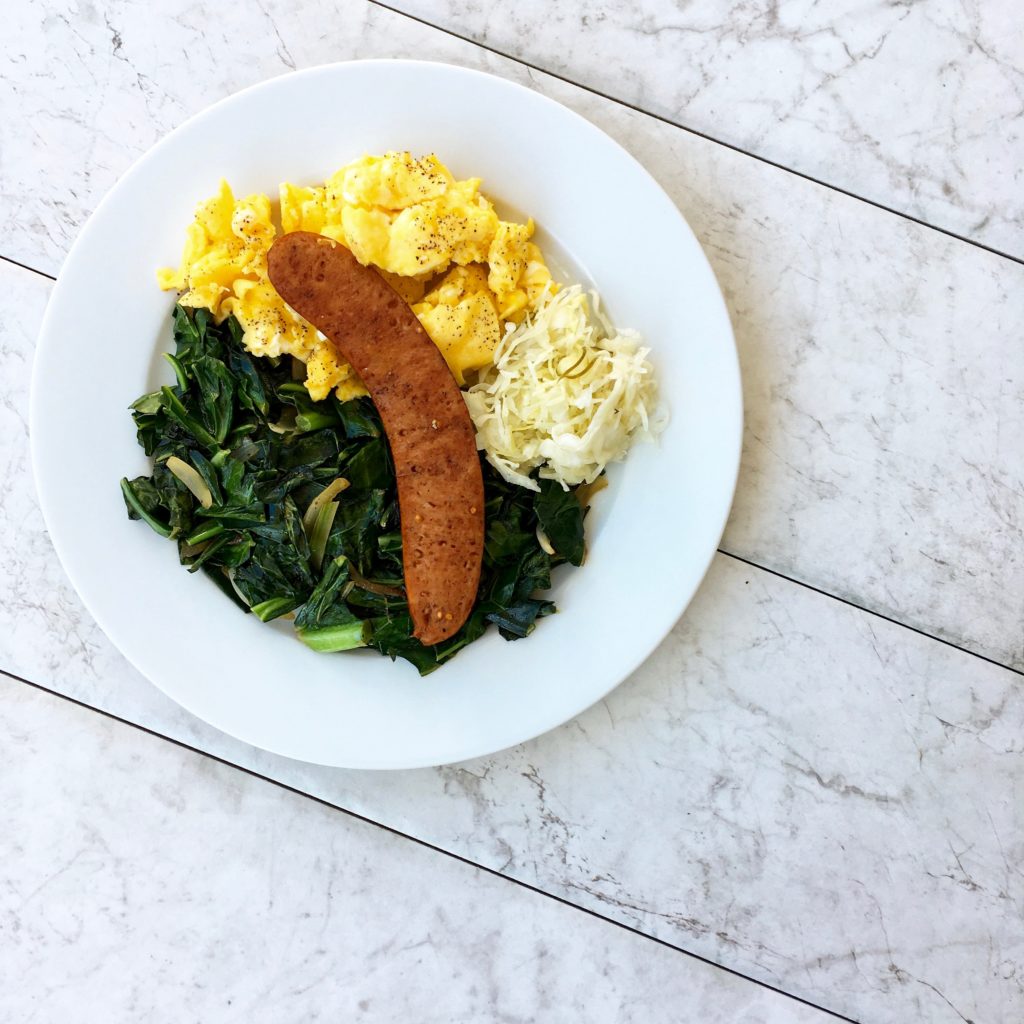
This brain-boosting breakfast includes 2 cups of collard greens cooked in bacon fat, 3 eggs fried in ghee, 1/2 of a pasture-raised sausage, and a big dollop of sauerkraut.
BREAKFAST TEMPLATE:
1-1.5 palm-sized servings of protein
1-3 cups of low-carbohydrate veggies
1-2 tablespoons of cooking fat or dressing (coconut oil, olive oil, ghee, bacon fat, etc.)
1-3 tablespoons of fermented vegetables (sauerkraut, kimchi, etc.)
Lunch: add a touch of starchy carbohydrate
Breakfast follows roughly the same template as lunch, but I encourage most clients to add a bit of starchy carbohydrate to this meal (about a half cup, or if you’re eyeballing it, the size of two golfballs).
Great “starchy carbs” to experiment with include sweet potatoes, regular potatoes, plantains, squashes (butternut, acorn, etc.), beets, carrots, etc.
This is a practice I picked up from Dr. Alan Christianson, who wrote The Adrenal Reset Diet. He recommends very few carbs at breakfast, a touch with lunch, and a bit more with dinner. Nearly all of my clients have issues with poor adrenal function (our adrenals play into our energy, mood, and so much more), and I’ve found this to be the best overall dietary approach for strengthening adrenal health.
By cycling carbohydrates in this way, you can positively impact your sleep, mood, hormonal rhythms, and weight. I won’t go deep into the science here, but if you’re interested in why, you can pick up Dr. Christianson’s book. (I don’t employ all of the tenets outlined in the book, but the carb cycling is a golden nugget.)
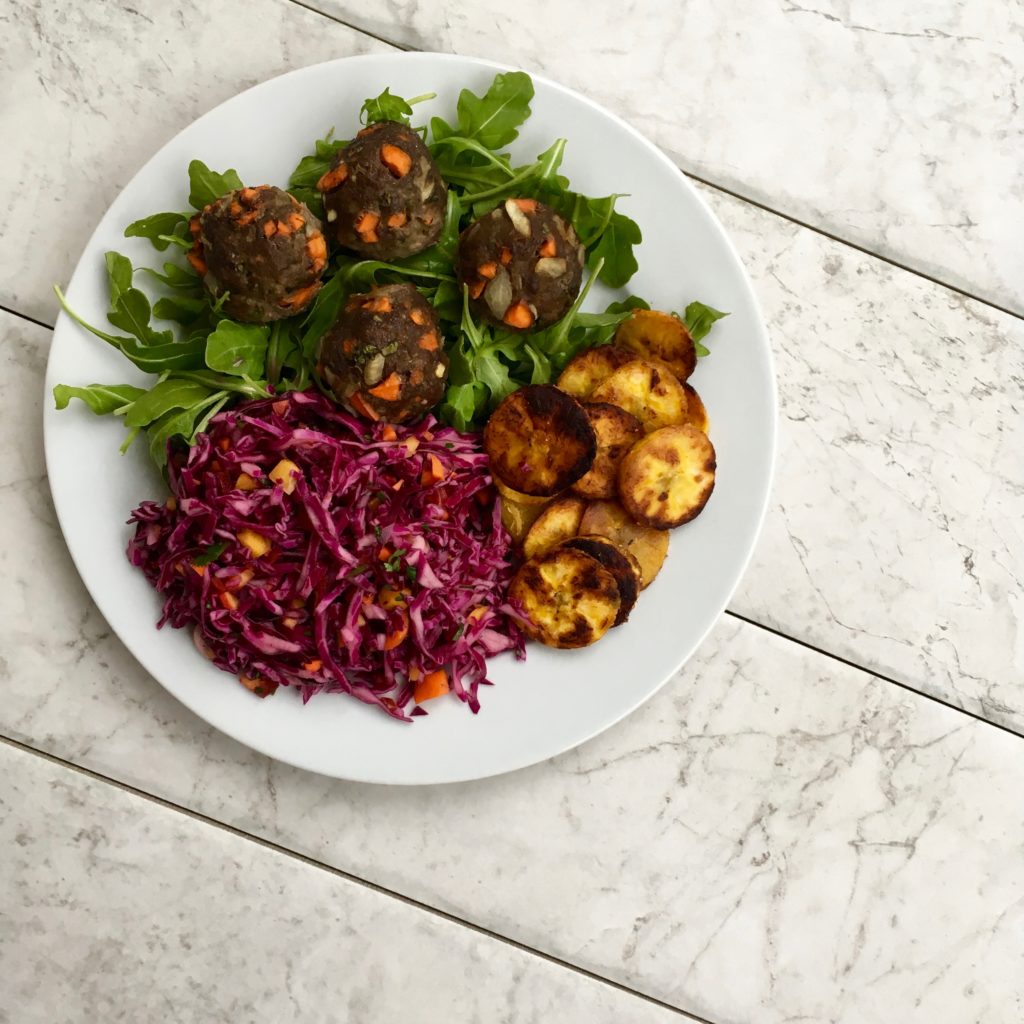
This delicious, mood-friendly lunch includes Asian-style meatballs over arugula, 1/2 cup of plantains fried in coconut oil, and a generous helping of Asian-style cabbage slaw.
LUNCH TEMPLATE:
1 palm-sized serving of protein
1-3 cups of low-carbohydrate veggies
0.5 cup of starchy carbohydrate
1-2 tablespoons of cooking fat or dressing (coconut oil, olive oil, ghee, bacon fat, etc.)
1-3 tablespoons of fermented vegetables (sauerkraut, kimchi, etc.)
Dinner: a few more carbs, if you please
In terms of macronutrient balance, dinner continues the pattern of breakfast and lunch, but I recommend you eat a bit more starchy carb with this meal — roughly 3/4 cup (again, if you’re eyeballing, that’s about 3 golfballs).
This will set you up for optimal sleep as you head into the evening. Adding carbs to a balanced dinner prevents your blood sugar from dipping too low at night, which is often responsible for the 3-4 a.m. restlessness that many people have.
Speaking of … if you’re having lots of trouble with staying asleep, I recommend a small nighttime snack right before bed. Suggestions include a couple of apple slices with a tablespoon of almond butter, a few bites of chicken and sweet potatoes, or a small handful of nuts and a few berries.
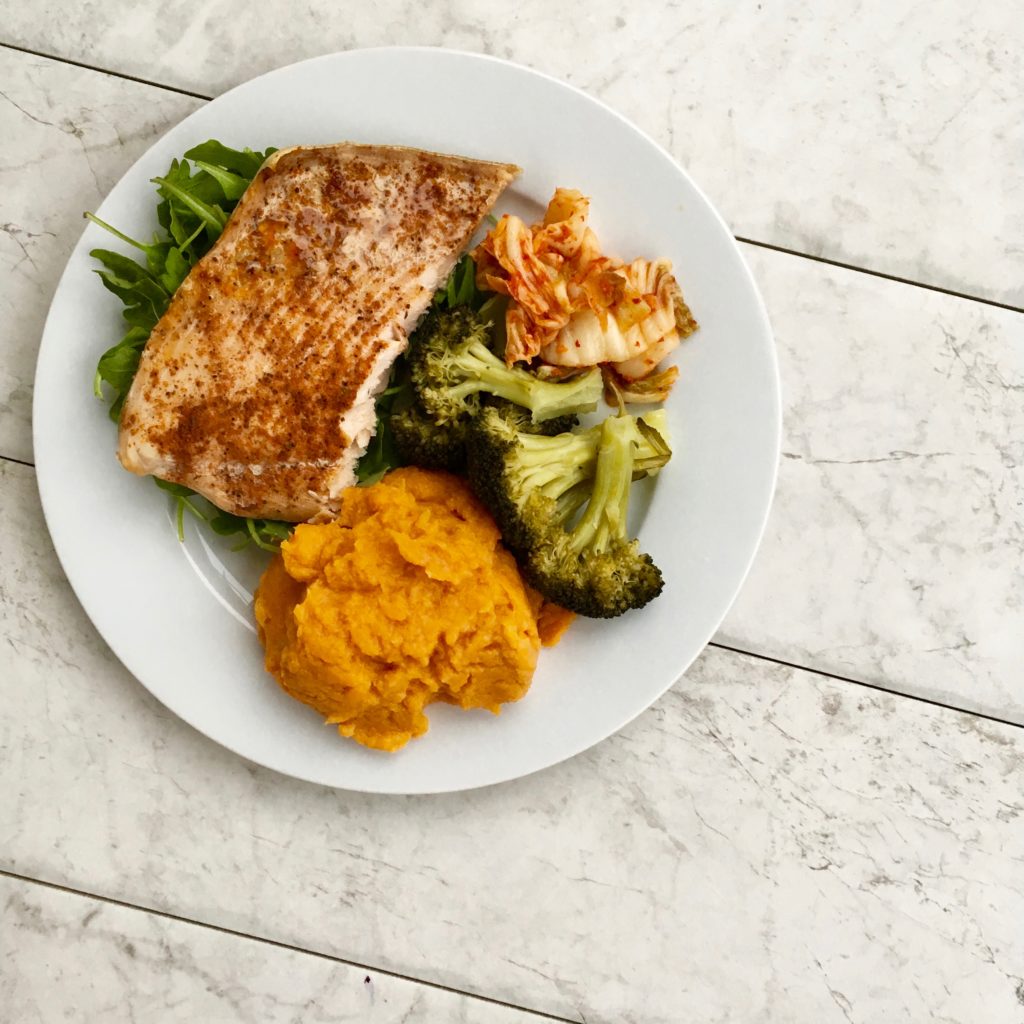
This dinner includes wild-caught salmon over a bed of arugula, 3/4 cup of sweet potatoes blended with ghee, broccoli, and kimchi.
DINNER TEMPLATE:
1 palm-sized serving of protein
1-3 cups of low-carbohydrate veggies
0.75 cup of starchy carbohydrate
1-2 tablespoons of cooking fat or dressing (coconut oil, olive oil, ghee, bacon fat, etc.)
1-3 tablespoons of fermented vegetables (sauerkraut, kimchi, etc.)
Snacks: keep it real — it’s not hard these days
I am so impressed by the number of companies that are offering whole-food snacks these days. Portable, convenient, and junk-free. Here are a few of my favorites:
• Epic Bars
• Dang Unsweetened Coconut Chips
• Wholly Guacamole Packs
• Justin’s Almond Butter
I don’t encourage all-day grazing. It’s important to give your body a break from digesting food, and if you can go several hours between meals without snacking, you’ll optimize hormonal function.
However, when you’re adjusting to a real-food lifestyle, or you’re just hungry and want a snack, by all means, have a snack. Opt for protein and fat if possible. If you want to snack on fruit, don’t eat it in isolation, as this will spike your blood sugar. Instead, pair that fruit with fat (e.g., an apple with almond butter, or a peach with some full-fat coconut milk).
Great snacks for depression include fruit paired with a nut butter, nuts, coconut chips, guacamole, sliced veggies, olives, and grass-fed protein bars, just to name a few.
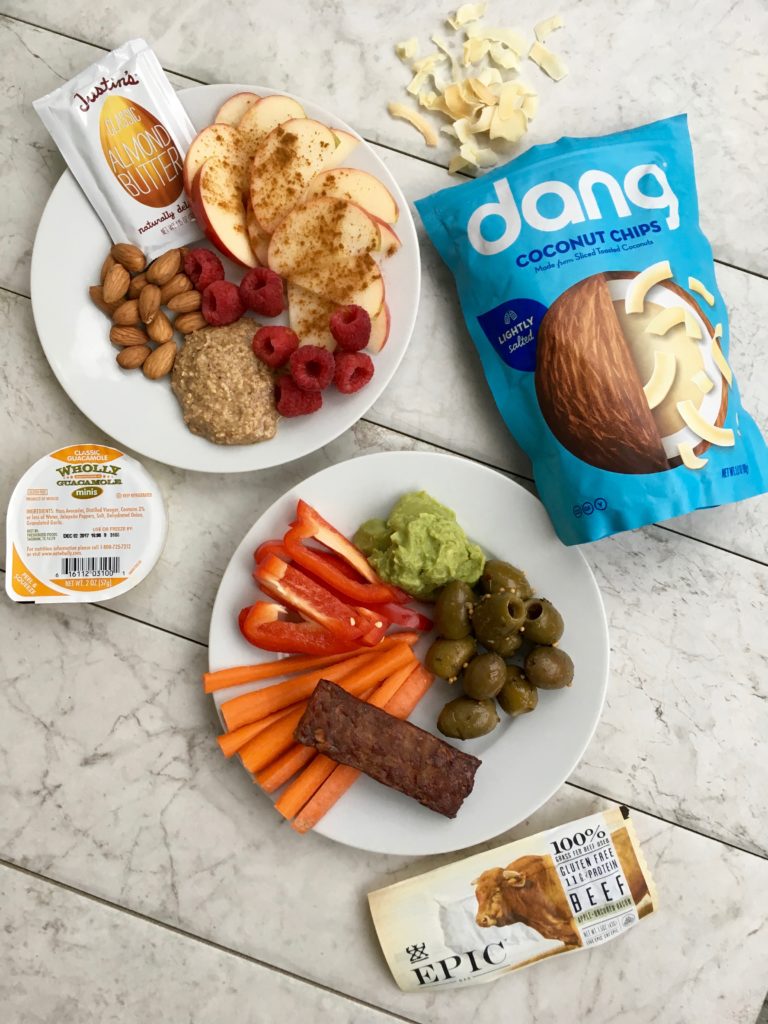
Great snack options for depression and anxiety include coconut chips, sliced veggies and guacamole, olives, meat sticks (with high-quality animal protein), nuts and nut butters, and fruits.
SNACK TEMPLATE:
Opt for protein and fat to keep blood sugar balanced
Don’t eat fruit in isolation — pair it with a healthy fat
Be careful of nut butter free-for-alls 🙂
Special foods for depression and anxiety: my top recommendations
Grass-fed beef: I recommend eating grass-fed beef at least three times per week. This contains a powerhouse of nutrients for depression and anxiety, and is particularly rich in important B vitamins.
Fish and seafood: If you’re struggling with depression and anxiety, incorporate fish and seafood into your diet at least twice per week. You’ve likely heard about the importance of omega-3s for brain health and mood, and I’m here to confirm that! Sardines contain some of the most concentrated nutrition, and you can try my yummy paleo sardine salad if you have trouble with the taste.
Fermented foods: While I do use clinical-grade probiotic supplements with clients, I still stand by the fact that naturally fermented foods are a fantastic (and much more affordable!) choice for probiotics. Probiotics boost your gut health and are especially important in relation to mood. Unless you have a histamine intolerance, I recommend consumption of kimchi, sauerkraut, kombucha, and other fermented foods on a daily basis.
Do you have to eat this way forever?
Many people see these recommendations and get overwhelmed. They think, “If I have to eat like that for the rest of my life, it’s not going to be sustainable, so why even try?”
As I mentioned above, this is what I consider to be an ideal template, and it’s also a starting place. It’s what I recommend for the first 30 days to achieve a baseline of healing.
You can’t do this for thirty days and then return to a Standard American Diet and expect success. In order for this to be effective, it has to be a true lifestyle shift.
But over time, and with healing, you’ll be able to incorporate other foods. These days, for instance, I’m able to eat white rice, goat cheese, and a few other “non-paleo” foods. I don’t go crazy with them, but I’ve expanded my plate and I’m still seeing excellent results.
Most importantly, don’t let a perfectionist mindset keep you from starting.
Need help with finding an approach that works for YOU? I’m still accepting clients in my Mental Health Nutrition Program.

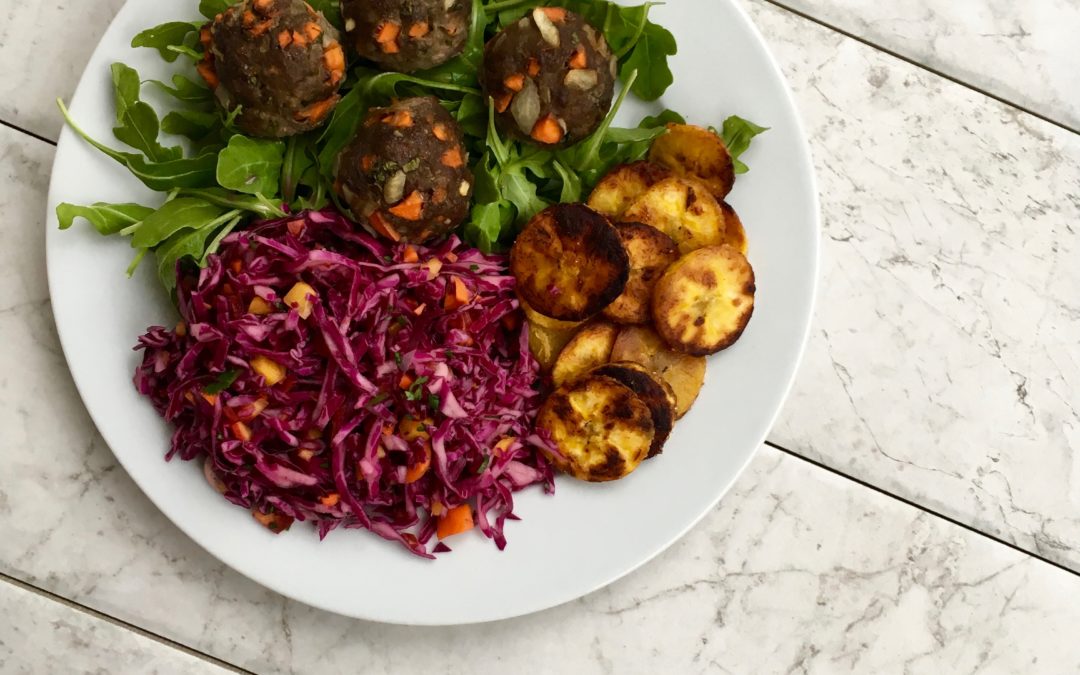
Great post! Very helpful seeing the portion sizes, too!
Thank you, Stacey! So glad it was helpful to you!
Any beverage recommendations? Green tea/ lemon water/kombucha?
Excellent I’m trying to help others as well
I get it ) now to maintain this
I’m basically plant based foods
Add in necessary what I need and can tolerate
What should I do if I’m vegetarian?
Hi Gina,
I do not recommend vegetarian diets, especially to individuals who have mental health issues. Vegetarianism is often an underlying contributor to depression and anxiety. I plan on writing a post about this soon, but in the meantime, I highly recommend the work of Dr. Natasha Campbell-McBride, especially her book Vegetarianism Explained: http://amzn.to/2nH4FJO
Gut and Psychology Syndrome is a fantastic read, too: http://amzn.to/2Bb56DP
I used to be a vegetarian, so I understand the concerns you may have. But ultimately, I do not believe it to be a suitable, long-term diet for those struggling with depression and anxiety.
Putting this on my refrigerator!
Awesome, Kim! Great idea!